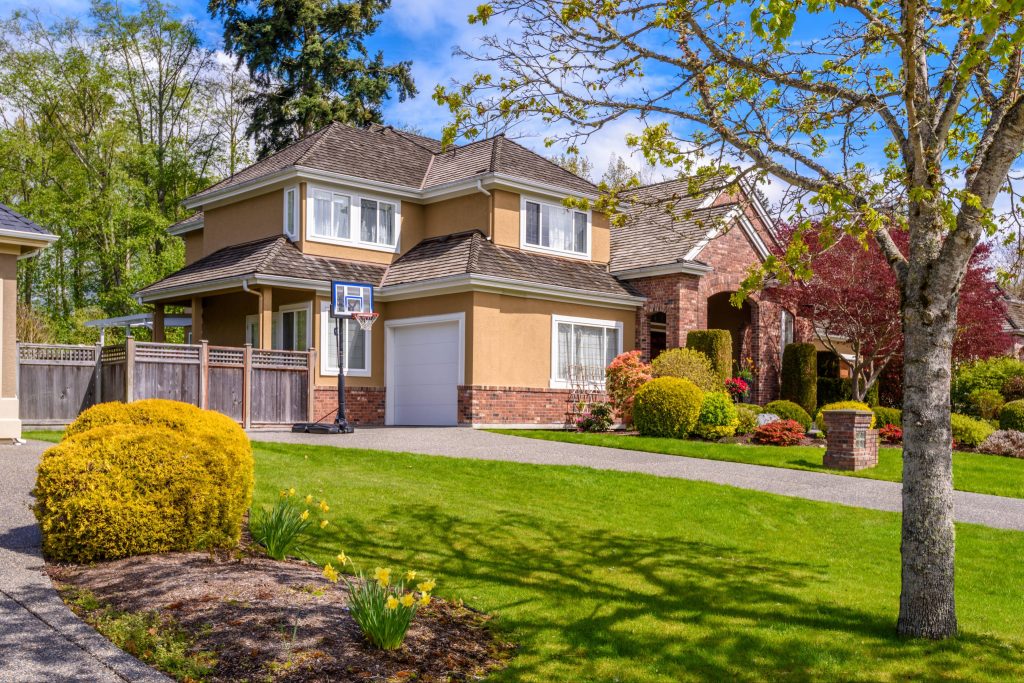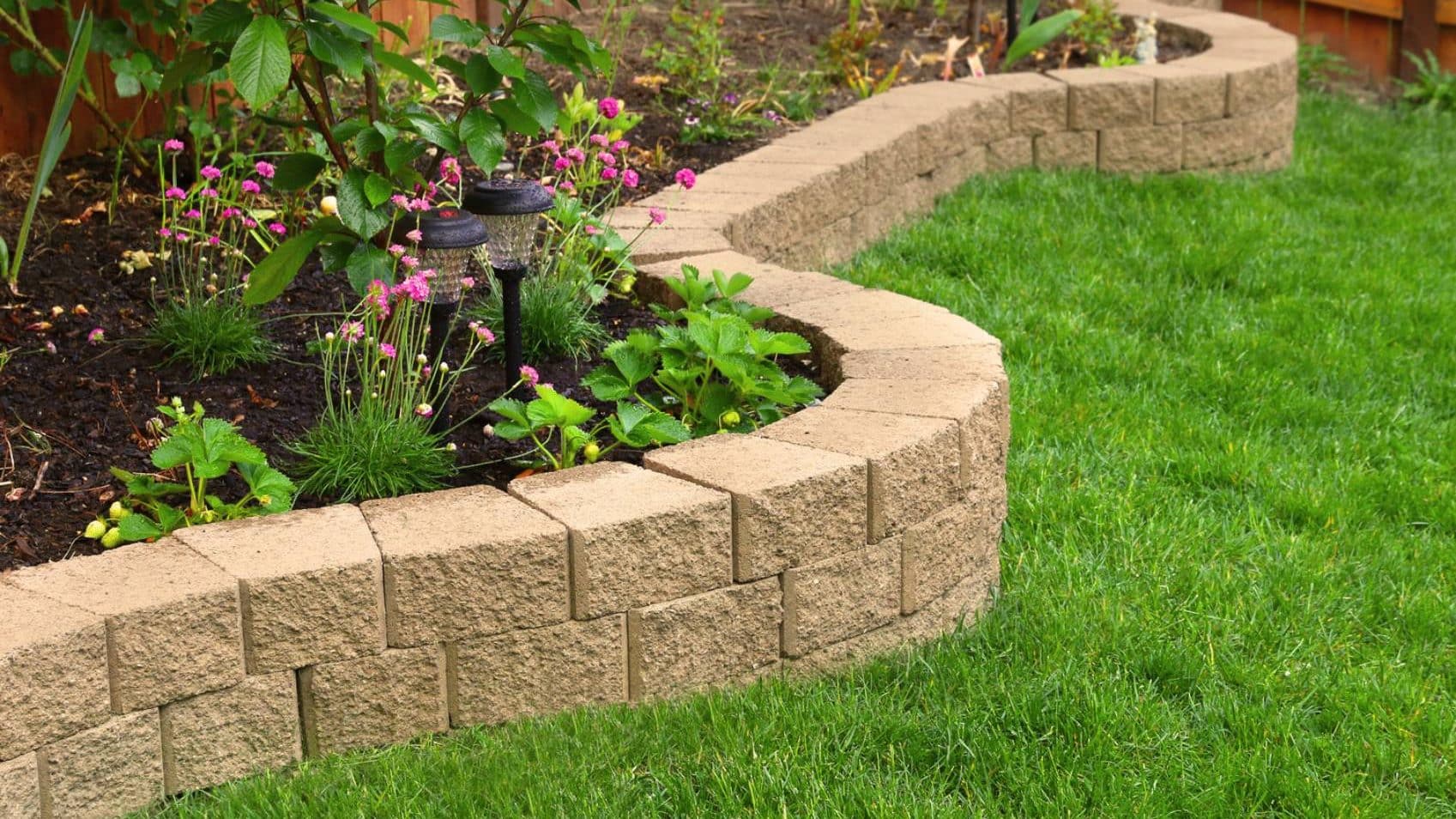
Creating the perfect landscape for your home doesn’t have to come with a hefty price tag. With smart planning and some creativity, you can transform your outdoor space into an inviting haven without breaking the bank.
In this blog post, we’ll explore cost-effective landscaping solutions and insider tips that not only save you money but also result in a stunning and sustainable landscape design. From DIY projects to long-term savings techniques, these ideas will help you make the most of your landscaping budget while increasing the value of your property.
Budget Landscaping Tips
So what if you’re on a budget, your landscaping can still look grand. That is if you landscape wisely. Many smart and cost-effective solutions for landscaping require less maintenance, water usage, pesticides, and fertilizer.
If you start small and in specific areas, then that allows you to better manage your resources. What’s more, you reduce expenses when you do yard projects in stages. When selecting plants for your yard, consider drought-tolerant varieties like succulent plants or those with silver or gray foliage that reflect light away from their leaves protecting them from the sun’s heat.
You could also install eco-friendly lighting systems like LED landscape lighting and use rain barrels or drip irrigation systems to collect rainwater which can be used for watering plants instead of relying on municipal water. These are just a few ideas for cost-effective landscaping, read on to find out more.
Incorporate Native Plants
For those on a budget, using native plants in your landscaping project is a smart and cost-effective solution. These local florae have naturally adapted to the climate and soil conditions, which means less maintenance and water usage.
Introducing diverse native plants can transform your garden into an inviting landscape that supports local wildlife like bees, butterflies, and birds – creating an eco-friendly oasis in your backyard. For example, if you live in the Midwest region of the United States, consider planting lush prairie grasses like big bluestem or vibrant wildflowers like purple coneflowers.
Reuse Materials
Repurposed materials are ideal for nearly every landscaping project. Not only does this approach save money, but it also promotes sustainability by reducing waste that would otherwise end up in landfills. For example, consider converting an old wheelbarrow into a charming flower planter filled with colorful blooms, or create garden stepping stones using leftover pieces of slate from a previous installation. Furthermore, pallets make for versatile building materials when creating compost bins and vertical gardens.
Use Seed Instead Of Sod
Opting for seed instead of sod is a cost-effective solution for homeowners looking to create a lush lawn on the cheap. Not only does seeding have lower upfront costs compared to sodding, but it also requires less labor investment, and can easily be turned into a DIY project, leading to significant savings.
Prepare the soil by removing weeds or debris and loosening it with a rake or rototiller to ensure the best outcome when using seed in your landscaping projects. Then, apply high-quality grass seed suitable for your climate and watering needs. Remember that consistency is vital in establishing healthy roots; therefore, water diligently during germination and monitor growth throughout the initial weeks.
By selecting native plants with drought-tolerant qualities while seeding your lawn, you’ll further reduce operational costs as these species tend to require less maintenance in irrigation and upkeep efforts.
Start With Small Projects
We think the best way to save money on landscaping is to start with small projects. Whether you are working on a tight budget or want to tackle an area of your yard at a time, starting small is a wise move. Instead of re-sodding your lawn, start by reseeding just one section or replacing a small patch with native plants.
Starting small also allows you to better manage your resources and time. Instead of feeling overwhelmed by an overhaul of your landscaping, breaking yard tasks into smaller pieces makes it more manageable financially and logistically.

Long-Term Cost Savings In Landscaping
You want landscaping that saves you money over time. It is possible, but takes some planning. Below we explore some more strategies for achieving cost-effective landscaping.
Use Drought-Tolerant Plants
An excellent way to save money and water in your landscaping project is through drought-tolerant plants. These plants withstand dry conditions, needing minimal watering compared to typical lawns and gardens. Drought-resistant trees, shrubs, and groundcovers perform well in harsh environments. For example, succulent plants like cacti can thrive even during droughts due to their ability to store water internally.
Similarly, lavender and sage plant varieties feature silver or gray foliage that protects them from the sun’s heat by reflecting it away from their leaves. Drought-tolerant gardening isn’t just beautiful, it’s a budget-friendly solution for landscaping projects because these hardy species require less frequent irrigation or and very little maintenance.
Install A Rain Barrel Or Drip Irrigation System
Conserving water is good for the environment and your budget. You can do this in your landscaping projects by installing a rain barrel or drip irrigation system. Rain barrels collect and store rainwater, which can be used for watering plants instead of relying on municipal water.
Drip irrigation systems are another efficient and economical way to water yards and gardens. They save time, money, and water by distributing small amounts of water directly to the roots of plants. This method can also help prevent issues like evaporation and runoff that often occur with traditional sprinklers or hoses.
Implement Eco-Friendly Lighting
Besides your watering and irrigation systems, your lighting can be eco-friendly, too. This type of outdoor lighting can reduce energy consumption, resulting in lower electricity bills. What’s more, using eco-friendly landscape lighting has other benefits too. It requires almost zero maintenance costs since LED bulbs have an extended lifespan compared to conventional lights. Plus, eco-friendly light designs are visually pleasing and can add a soft, comfy glow to your backyard design.
Conclusion
Despite what you might have believed, landscaping projects don’t have to be very expensive. From using native plants to reusing materials and starting with small projects, you can achieve a beautiful outdoor space without overspending.
So what are you waiting for? You can get started on the landscaping that you’ve always wanted. Remember that simple improvements like trimming hedges and clearing away brush are a great way to begin. Before you know it, you’ll have a gorgeous yard that will delight you and your guests and increase the value of your property.
